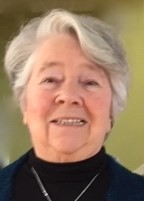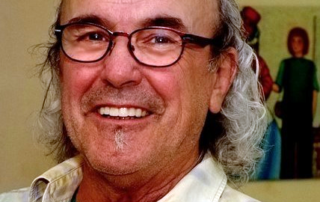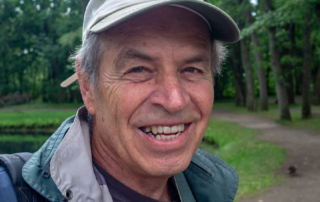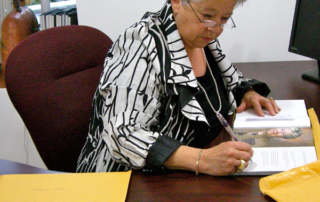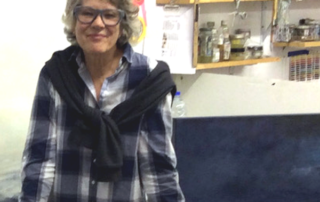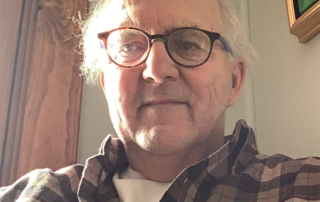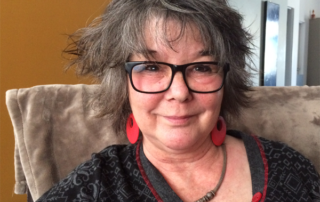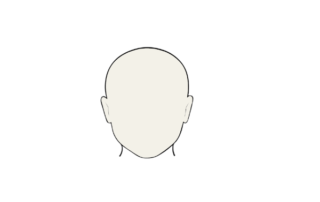Artist biographies
Barto

See her artworks in the gallery
Of French origin, born in 1952 lives in Quebec since 1968.
Autodidact.
I’ve been drawing since I knew how to hold a pencil.
I’ve been interested in digital art since I know how to hold a computer!
Hanging on my pencil I surf on the wave of my unconscious source of my inspiration.
The dream and the absurd are my faithful travel companions.
Imagination is the vehicle that thrives on delusions.
The moment of departure is unpredictable, the arrival is even less so….
Welcome aboard!
See the artist’s artworks
André Bécot
See her artworks in the gallery
André Bécot studied at the School of Fine Arts in Montreal and at the University of Quebec in Montreal. Since 1970, he has taken part in numerous individual and collective exhibitions and has completed numerous internships in Quebec, the United States, France, and Italy.
In the creation of his works, he occasionally uses new technologies. His current work is focused on the representation of political, social and economic symbols and icons. Finally, for several years, he has organized numerous events in the field of visual arts, for the Club of collectors in visual arts of Quebec and at the Atelier Galerie Bécot.
See the artist’s artworks
Renald Brisebois
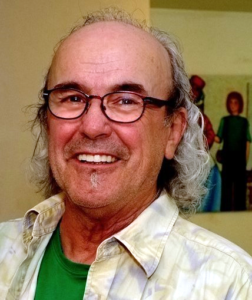
See her artworks in the gallery
Renald Brisebois is a native of Montreal and has been rooted in Quebec City for 42 years.
He discovered this passion for creation in Toronto in 1969. Beginning in 1970, he trained in General Art at the Central Technical School in Toronto.
Back in Montreal, he followed other training in advertising drawing, posters model maker and graphic designer. In the meantime, he ran a small business of lettering for advertising posters and freehand truck lettering, while creating his artwork.
In art gallery for 35 years, he has participated in several solo and group exhibitions across Canada, the United States and France. He won awards for the Original Creation category and an article in Art magazine in 2012.
A few years later, he was found in France at the Maison Emma, an artists’ residence in Saint-Mathieu-de-Tréviers, as well as at the Maison d’artistes de la Grande Vigne also called Musée Yvonne Jean-Haffen, in Brittany.
In 2019, one of his paintings was selected for an exhibition at the Musée Yvonne Jean-Haffen.
In 2020, he is back in France in Moncontour, in July and August to exhibit and teach art to young children.
The work of Renald Brisebois is abundant and unclassifiable In a language of his own, the artist has been creating images that life has inspired him, with incredible freedom, for more than 35 years.
His Vision of Art
His many years in creation tend to demonstrate that no theory can properly define the imaginary. To tell the truth, the tangible expression of the imagination arises on its own when it is not retained by reflection.
The best paintings are often the work of heterogeneous ideas that take shape through the medium. Create paintings inspired by everyday life and dreams and surrounded by symbolism, deepness, and humour. For him, painting is knowing how to express oneself without words!
Roger Fournier

See her artworks in the gallery
Journey of life and creation
I did visual arts; I practiced screen printing at the Graphic Realizations workshop in Quebec. I lived a monastic experience in Saint-Benoît-du-Lac. Later, I studied theology with a thesis on the icon, which led me for 20 years to write icons according to tradition. Another medium that I like is watercolor for its spontaneity and the work on the motif (landscape). History: Icon comes from the Greek word eikov (image) and has come to mean the icon on wood, with biblical motifs.
The icon developed in the East, in Byzantium which became Constantinople, the second capital of the Roman Empire with the Emperor Constantine. After the schism of the Church between the East (Orthodox) and the West (Catholic), in 1154, the Orthodox Church will keep the art of the icon.
Technique: The support is a wooden board covered with glued cotton and several thin layers of calcium carbonate / drawing / laying of gold / natural pigments diluted in egg yolk and water. Symbolism and examples: Gold symbolizes divine light. We put the dark colors to go from light to light. Clothing of Christ: red tunic (divinity), blue mantle (humanity). Liturgy and prayer: In the church, everything contributes to beautiful celebrations, and the icon participates in this through its aesthetic research. In the house, the Orthodox family reserves a space for prayer, with icons called “corner of beauty”.
The gaze of tenderness: We speak of inverted perspective; the people in the icon, Christ, the Virgin, the saints, look at the viewer. The Virgin of tenderness (cheek of the child against the cheek of his mother) expresses all the divine tenderness towards each and everyone.
Icon making: In Quebec, icons have been made for over 40 years.
Roger Fournier, 2021
See the artist’s artworks
Sylvie Grondin

See her artworks in the gallery
Artistic approach
Abstract by definition, the non-figurative immediately imposed itself in my so-called “suggestive” works. I hope that reading will become a real pleasure for everyone, that we find our own references and surprise ourselves to travel freely.
My work is initiated by a long pictorial research and several techniques, including mixed media, printmaking, paper making and transformation will be used to deepen my art.
Paper work therefore occupies a prominent place in my creative process. Different processes will be used to give it the appearance of old leathers and old skins that recall the alteration by the passage of time … Life.
Succeeding in integrating these different materials, making everything harmonious and feeling that they will be able to live well together, this is my quest.
In painting as in print, the colored surface consists of a superposition of colors, multiple wipes and additions of glazes that I favor thus giving effects of depth and transparency that enrich my work.
My work ends when I feel that a great harmony emerges from the whole and when I have the impression that one more gesture would clutter him and one less would miss him.
Céline G. Lapointe
See her artworks in the gallery
Journey of life and creation
For more than forty years, at the border between human and nature, she uses in her work the expression of bodies, the lyricism of nature, human groupings and the links they weave between them.
Gathering in her artistic approach where animal, plant and human suggestions come together in a common search for regrouping and solidarity that her families, teams, merged characters, edifices whose welded bodies share their forms in the mass suggest to us. She expresses herself in her paintings and sculptures thanks to materials such as acrylic, Indian ink, stone, bronze, aluminum, concrete and resins that she uses in an approach that is fertile in creativity. .
A work presenting a certain aestheticism, a slight realism to allow the creative process to take on its full meaning, delivering its mystery to us in color, graphics, texture and contrast. She cannot choose between painting and sculpture, both inspire and fascinate her.
Through her automatic and gestural approach, she recognizes and receives from matter the subject that inhabits her, appropriates it, thus expressing her respect for man and nature by simply allowing matter to be! She then offers us a certain figuration leaving the imagination of the viewer, to receive, discover and reinvent her subject.
A unifier in her professional life, she involves other artists in projects carried out in Quebec such as the foundation of a cultural organization in Cap Rouge, the MAA, which has had 30 years of existence as owner of the Maison Blanchette art center. . Then, abroad, at the Quebec delegation in New York, in sculpture symposiums in Oronsko, Poland and in a sculpture garden project on Anticosti Island (8 years in a row). Events in which several artists participated at his invitation and sometimes also thanks to his support during the production of their works. She taught sculpture at Cap Rouge for more than ten years.
A true and authentic designer proud of not following imposed fashions or trends, developing her own approach in complete freedom over the years.
See the artist’s artworks
Alain LeBlond

Alain LeBlond
See her artworks in the gallery
Born in Quebec in 1957, where I still live there, I am fundamentally a musician. From my adolescence, I played the organ in the church of my parish. Photography and architecture fascinate me.
In 1975 I entered the Conservatory of Music of Quebec in organ to, thereafter, join the class of composition where I made the significant meeting of my artistic life in the person of Pierick Houdy (grand prix de Rome) my professor who will tell me: “Mr. Alain LeBlond was a remarkable student in my composition class in the early eighties. He possesses the qualities that make true musicians: imagination, originality of thought, writing technique, humor, without which the art is just a system… Alain LeBlond is an excellent musician. »
In 1984, parallel to my composition work, I tried the business world. In 1989 I created my own publishing house and discovered computerized musical engraving. I understand very quickly that the computer also allows me to explore the visual arts. I discover these new avenues and do graphic design professionally. During these years, I was particularly on the lookout for advancements in 3D modeling and virtual hyper-realistic visualization.
In 1996, following a short initiation stay at the National Animation and Design Center in Montreal, I had the opportunity to acquire very high-level 3D software equipment. I then devoted myself to this practice and accumulated, in just a few years, tens of thousands of hours of use to become, in a self-taught way, a virtuoso of these techniques.
I finally feel free to express my visual fantasies and deliver both imaginary and realistic works of exceptional quality and finesse in balance and complementarity with my musical compositions.
Musician, composer, organist, creator of virtual design, occasional cabinetmaker Alain LeBlond is a complete artist.
Free in thought I live by and through creation.
Alain LeBlond, May 2017
See the artist’s artworks
Jérôme Morissette
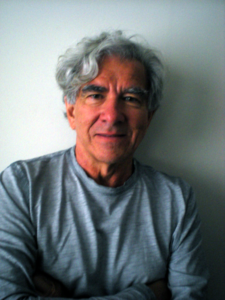
See her artworks in the gallery
Artistic approach
After studying Biochemistry and Arts, in 1974 I began a career in the field of conservation-restoration of works of art and more particularly of sculptures and metal objects.
For more than thirty years, my activities as a restorer have led me to work on various works of public art (Daudelin, Vaillancourt, Trudeau…) as well as on sculptures from museum collections (Riopelle, Arp, Picasso, Serra…) or private collections (Rodin, Brancusi…).
This career, while being related and parallel to the Arts, has however led me to put my artistic creation on the back burner. It is only in recent years that I have “humbly” resumed my production
If my first influences originated in Arte Povera, they flirt increasingly frequently with minimalist art, both in painting and sculpture.
My works then become as many pretexts to highlight certain so-called vile materials. I let speak the material which is then declined in texture, in patinated surfaces.
Jérôme R. Morissette
Suzette Patry

See her artworks in the gallery
Suzette Patry is a graduate of the École des Beaux-Arts de Québec. She worked in illustration and graphic design at Laval University. His current artistic practice navigates between abstraction and realistic representation.
During my childhood, attending the École des beaux-arts pour enfants de Québec developed my imagination as a storyteller and enriched my way of observing the world. As an adult, studies in fine arts and a career in illustration confirmed to me the power of the line as a mode of expression. My work goes through drawing, whether the composition is abstract or figurative.
Passionate about the living, it is through nature that I try to identify the human. My drawings are precise and elaborate. In the course of the work, stories are born: tree-characters, robust and fragile, amazing trees that have fun making their roots dance. Or these characters who tell the anguish and the passage of time are all metaphors of human vulnerability. I also leave room for my imagination by creating more whimsical drawings: fantastic horses, birds with rainbow colors, flowers with surprising lines.
In my abstract subjects, I let the gesture, the line and the color speak on the paper. Then, via photocopying, I manipulate, I tear, I triture: these dances of created forms, I call them “flapping of wings”.
Because I am “a storyteller in pictures”, my stories give a large place to poetry. It is through her that I mean to move the viewer and make him discover all this beauty that surrounds us and intoxicates us.
Carol Poulin

See her artworks in the gallery
Journey of life and creation
Carol Poulin lives and works in St-Augustin-de-Desmaures.
After studying at the Institute of Applied Arts in Montreal in 1966, he obtained a bachelor’s degree in 1971 from the School of Visual Arts at Laval University.
He has been both a painter and a restorer of works of art since 1982. His career is punctuated by numerous individual and collective exhibitions and was invited several times as a lecturer on the profession of painter and restorer.
With the accumulation of years and knowledge of the profession, the creative process has become the driving force of his approach, and improvisation has imposed itself as a starting tool. This approach favors the unexpected, makes the gesture urgent and inevitably provokes the renewal of imagery and language. The abandonment of reason in favor of the subconscious takes him to unsuspected places, as far as those of childhood.
No technique is privileged, the choice is made instinctively. Realism, expressionism, surrealism, abstraction… these artistic movements manifest themselves in his creative process over the years.
Lyrical abstraction might be a way to define his current work.
See the artist’s artworks
Marie Rioux
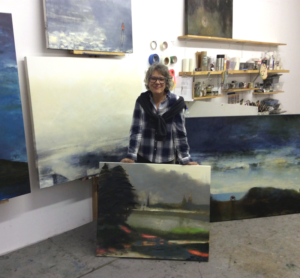
See her artworks in the gallery
My approach
Whatever I wish to express, atmosphere is a constant in the conception of my artworks. I enjoy creating dramatic ambiences in which imaginary places and the real-world merge, giving rise to different possibilities. In them, I highlight, through their eye-catching aesthetic, certain urban details lost in these vast spaces. Out of them arises a mixture of immobility, mystery and silence in which humanity proceeds towards its elsewhere . . .
It is in contemplating my surroundings that I find inspiration. Through the happenstance of strolling about, my eye catches forms, lines, saturated colours and the vibrations around me, recording them in me.
When I am in front of the canvas these elements rear up again, revealing themselves and in this way forming the basis of my own aesthetic. To this is added the influence of the current state of the world, on which the editorial thread of my work draws. Through this artistic language, I communicate my perception of the world today.
I express my emotions through the composition and, as a result, initiate a dialogue with the other. In my pictorial world there is no boundary between figuration and abstraction. They penetrate one another. My visual language is primarily and profoundly instinctive, intuitive and non-conformist. The essential thing is that my paintings project duality, that they be enigmatic and open to various readings.
In the studio, listening to music which creates a protective bubble around me, I choose the format and colours I wish to work with. Oil, acrylic, sometimes pastel and pencil . . . I use monochrome shades to produce a dramatic effect and to accentuate my serious purpose, even as I enjoy and have an aptitude for mixing colours.
I do not follow artistic trends of the day and do not work to meet viewers’ expectations. It is up to them to find their own resonance, their own meaning and pleasure. Above all, my ideas respond to an inner need, independent of fashions.
The artwork, like all that is vital, must be able to evolve.
See the artist’s artworks
Marie-Dominique Rouleau
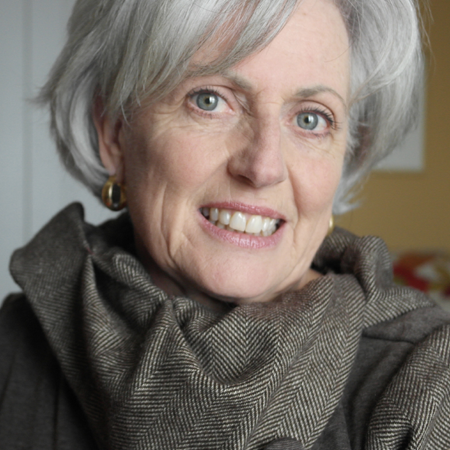
See her artworks in the gallery
Marie-Dominique Rouleau was born in Hauterive on the North Shore. She lives in Quebec City. Self-taught artist since the 1980s, she is first interested in transparency and color by learning stained glass and watercolor. Then, she develops fluidity and movement through calligraphy and Chinese painting. A member of the Atelier de la Mezzanine of the Coopérative Méduse since 2004, she has been experimenting with new techniques such as acrylic, printmaking, photograms and felting. She tackles superpositions, collages and the search for new materials, such as encaustics and above all, textiles.
She has participated in several collective projects initiated by various cultural organizations of the Méduse Cooperative, with Folie/Culture and Sherpa. With these experiences and the many trainings that led her to perfect her approach, she finally discovered textile art and made it her favorite activity.
In 2015, she won a first prize at the L’Art au Parfum competition, for her work Ipanema on Map, a map art style piece made of felt. In 2021, one of his collages is published in the trade journal Tissue Box/Boîte à mouchoir by Kasini Canada. In 2022, she presents a major textile work as part of the Manif d’Art 10.
Jacques Sylvain
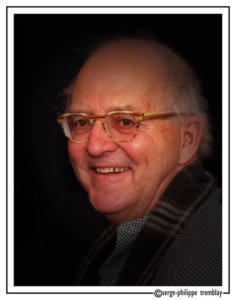
See her artworks in the gallery
Art, in all its forms, has always been part of Jacques Sylvain’s daily life. As a teenager, he already preferred to scribble in his notebooks and get lost in his daydreams rather than listen to the rational speech of a teacher. This dreamy and visionary character is one of the traits for which we appreciate his works.
More than forty years of work have shaped his paintings inspired by travel, everyday life and imagination. In parallel with his career, he worked as a painter. It is the passion that has allowed him to find this energy through his professional and family obligations. Since 2007, he has devoted himself full-time to creation.
I paint affirms the beauty of the people who cross my path and my gaze.
I paint the expression of the musicians. These artists who make us dance and sing. I like their gestures and their sensitivity, the expression of their body through which the music passes.
I paint the dance of windswept wheat fields.
I paint the vibrant colors of poppies that have a very short life expectancy.
I paint the girl who accompanies me, so that we still offer her face when neither she nor I will be there anymore.
I paint the traces of humanity so that one day in the cave of oblivion we discover the beautiful moments of life.
I paint those who look at beauty without being in a hurry for the next appointment.
Klôdy Tremblay

See her artworks in the gallery
Klôdy Tremblay, metamorphosed nature.
I have only pushed to the extreme what you yourself only dared to push halfway.
Dostoievski
The artist, a native of Chicoutimi, has nurtured an all-consuming passion for nature since childhood. A nature animated by the flow of a torrent unleashed metamorphosis according to the seasons. In love, free, gipsys, bohemians, feverish or radical, epithets that are not enough to define her. Both dancer and musician, she lays on paper the vibrato of a body-sound, her jazz or flamenco works testify to this. Fruit of a crazy creative tension, this exalted tone of the artist is manifested in his spontaneous gestures, vivid lines with bold outlines. This fury finds no barrier. Each step is a counterpoint to an ancillary desire for emancipation. His metronome is rhythmic at the intimate cadence of an unknown frequency. Klôdy Tremblay is a multidisciplinary artist who hates refrains. Certainly, to surprise her creative momentum, she does not hesitate to leave everything behind to thwart her own palette. It is like that forest renewed after the fire. Its highlight ceases to be the frantic beating of a sprinter’s heart.
Michaël Lachance,
Art critic and essayist.
See the artist’s artworks
Ann Warren

See her artworks in the gallery
Since childhood, Ann Warren had to deal with deafness and by the age of seventeen she had already decided on a career, a career that would allow her to express herself through images.
After completing the plastic arts program at the CEGEP de Sainte-Foy, she worked for two years at the Moulin des Arts under the direction of Albert Rousseau.
First an engraver, she then turned to watercolour, a medium she practiced for ten years before exploring the different techniques of oil painting.
From these mediums, she will keep above all the fluid aspect of watercolor and the faded glazes of oil paint, working in acrylic on Arches paper and on canvas. His surfaces, sometimes fluid, sometimes heavy, are intended to be without impasto. His technique allows the grain of the paper to show through under the many layers of color.
Ann Warren was once an exhibition designer, graphic designer, writer (including a collection of children’s books published by Grolier) and painting teacher.
What surprises in the works of this artist is the quality of her drawing, her imagination and the maturity of her technique. Its theme is allegory and can be summed up in three words: light, characters and atmosphere.
Ann Warren is not part of any artistic movement and is constantly exploring new avenues and moving towards the creation of images combining reality and abstraction of beings and things.
Ann Warren has been exhibiting her work for over forty years. She has participated in numerous collectives and has produced around twenty individual exhibitions.
Grant holder in 1989 of the program “The next generation” of the Ministry of Culture of Quebec, she participated in the traveling exhibition “Reflexion-Réfraction” presented in fifteen cities of Quebec.
Since 2004, she has taken part in the artistic support program Vincent et moi at the Institut universitaire en santé maladie du Québec.
In 2014, a retrospective exhibition of his career was presented at the Musée de Charlevoix.
Her works are part of private and public collections in Canada, the United States and France.
Ann Warren died of pancreatic cancer in November 2019.
Jing Xuan

See her artworks in the gallery
Jing Xuan 静轩
Jing Xuan is a renowned artist and intellectual researcher, born in 1947 in Changchun, China.
From the beginning of his career, he devoted himself to traditional Chinese painting as well as oil painting, under the direction of the famous master of oil painting Yuan Yunsheng 袁运生, as well as the famous master of painting Chinese tradition, Guan Longdian. One of its particularities is the integration of characteristics of Western painting into traditional Chinese paintings. He draws inspiration from the poetry and charm of the Orient and Chinese culture in his creations.
The artist has a very broad vision of the visual arts. With his unique sense of aesthetics, he worked for many years in modern design and completed several major projects for various international exhibitions. Inspired by many great Chinese artists and intellectuals from different eras, his artistic creations, paintings, calligraphy and theoretical research demonstrate a rich understanding of Chinese culture and arts. Jing Xuan is an artist engaged in three areas: calligraphy, painting and the publication of theoretical research on art.
He is an associate researcher at the Academy of Arts of Jilin Province, a member of the management of the “Dream in the Red Pavilion” Study Society of China (红楼梦学会). He is a painter, calligrapher, theoretician and recognized specialist in China of the work “Dream in the red pavilion”. He has a deep understanding and rich knowledge of Chinese culture and arts which he conveys in his artworks. He is currently the executive editor of the magazine “Jilin Pictorial – The World of Arts” in China.
The artist is mentioned in the “Dictionary of contemporary traditional calligraphers and painters of China”, in the “Dictionary of contemporary famous artists of China” as well as in the “Dictionary of contemporary visual artists of China”
静轩,1947年出生于中国长春学, 著名学者型艺术家。 早年从事中国画和油画创作,师从著名油画家袁运生。 中国画以著名画家关龙甸为师。 在中西画融合方面形成自己的艺术特点。 并在绘画中以突出东方神韵和中国文化精神而独树一帜。 从大美术方面,画家多年从事展示艺术,以大视野融入审美之中。 因深受历代名宿的感染,因此在绘画、书法、艺术理论方面突出中国文化艺术精神作为从艺术创作的主线。 静轩是从事书法、绘画、理论研究的三栖美术家。 是吉林省书画院理论研究员,中国红楼梦学会理事。 集著名画家、书法家、理论家、红学家为一身,具有大文化、大美术、大视野的艺术特质,因此,其作品形式多样、个性鲜明,深受海内外收藏者欢迎。 他现任《吉林画报•美术世界》杂志执行主编.



